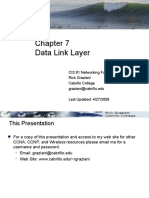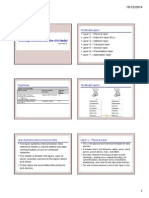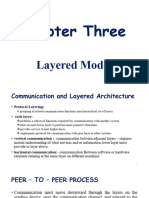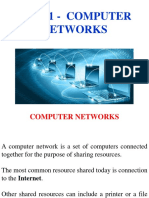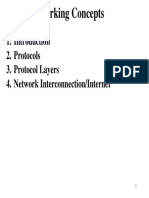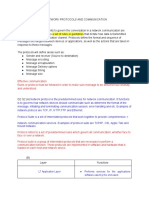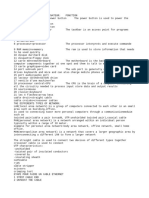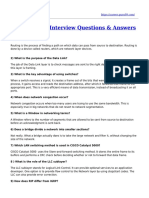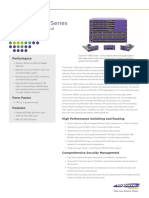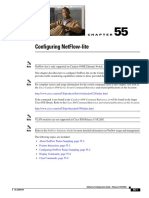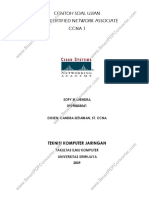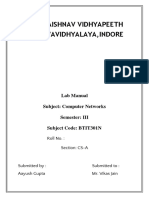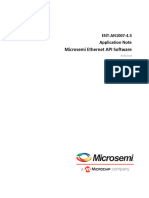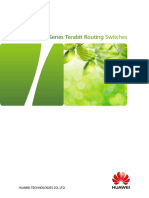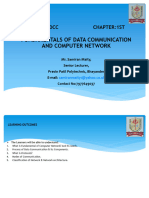0% found this document useful (0 votes)
75 views26 pagesINTNETWORKING
The document discusses the layers of the OSI model and how they enable internetworking. It describes each layer from the physical layer up to the application layer, explaining their functions and providing examples of protocols used at each layer. The purpose of layering the model is to simplify networking, allow for specialization, provide modularity, encourage interoperability, and enable standardized interfaces.
Uploaded by
Abdourahmane BaCopyright
© © All Rights Reserved
We take content rights seriously. If you suspect this is your content, claim it here.
Available Formats
Download as PDF, TXT or read online on Scribd
0% found this document useful (0 votes)
75 views26 pagesINTNETWORKING
The document discusses the layers of the OSI model and how they enable internetworking. It describes each layer from the physical layer up to the application layer, explaining their functions and providing examples of protocols used at each layer. The purpose of layering the model is to simplify networking, allow for specialization, provide modularity, encourage interoperability, and enable standardized interfaces.
Uploaded by
Abdourahmane BaCopyright
© © All Rights Reserved
We take content rights seriously. If you suspect this is your content, claim it here.
Available Formats
Download as PDF, TXT or read online on Scribd
/ 26







